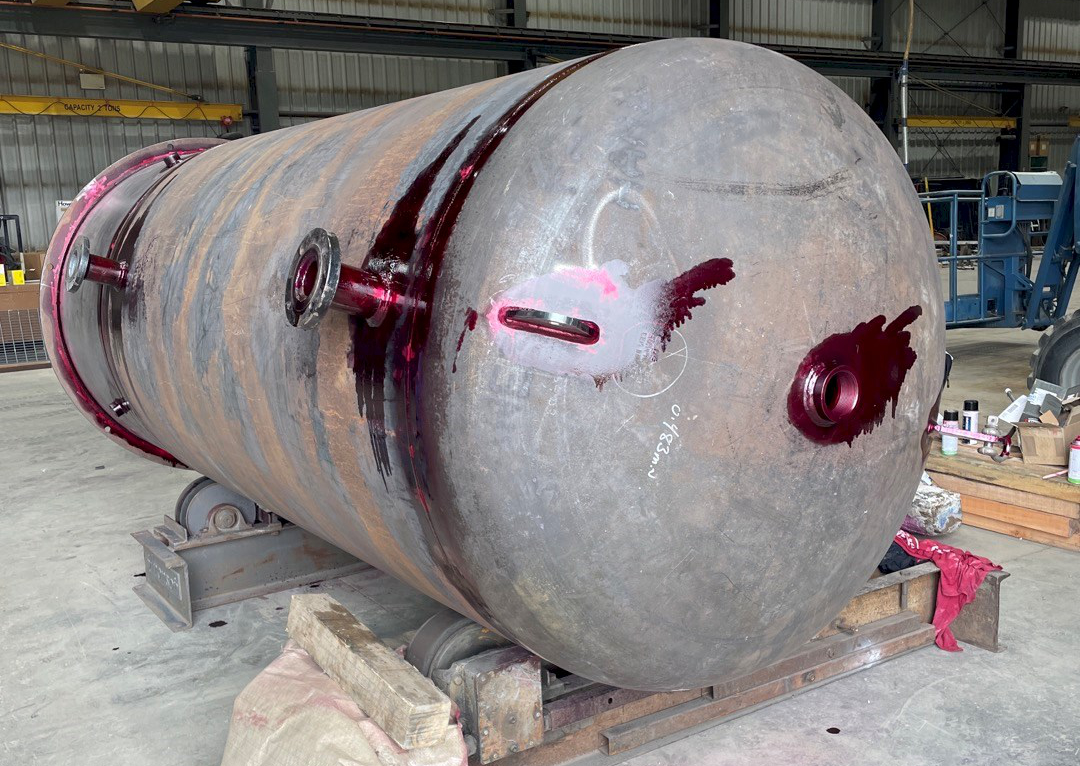Just How Tank Welding Inspection Protects Against Future Structural Failings
Just How Tank Welding Inspection Protects Against Future Structural Failings
Blog Article
An In-depth Review of Container Welding Examination Standards and Methodologies for Improved Weld High Quality and Performance
The relevance of welding evaluation standards in the manufacturing of tanks can not be overemphasized, as they offer as the backbone for making certain weld integrity and functional reliability. Various assessment strategies, consisting of visual assessments and progressed non-destructive screening methods, are critical in determining prospective problems that could jeopardize efficiency.
Significance of Welding Examination Requirements

Welding evaluation standards encompass an array of standards, including product specifications, welding treatments, and certifications of workers involved in the welding procedure. By implementing these requirements, organizations can methodically identify and rectify possible flaws, consequently lowering the possibility of costly repair services or tragic failures. In addition, strenuous evaluation methods promote a society of responsibility and precision, urging welders to keep high degrees of craftsmanship.

Common Welding Evaluation Techniques


Ultrasonic Testing (UT) is an additional widespread method, utilizing high-frequency acoustic waves to identify internal defects that might not be visible externally. This method is especially reliable for identifying spaces or inclusions within the weld steel. Magnetic Particle Examining (MT) is additionally widely utilized, specifically for ferromagnetic products, as it reveals surface and near-surface problems with the application of electromagnetic fields and ferrous bits.
In Addition, Liquid Penetrant Testing (PT) identifies surface-breaking problems by applying a penetrant to the weld and after that using a designer to attract out the penetrant. Each of these strategies adds to a detailed inspection technique, ensuring that welds meet the stringent top quality requirements called for in container building and construction.
Regulatory Standards and Compliance
Governing standards and compliance are essential parts in guaranteeing the security and integrity of bonded structures in container construction - Tank Welding Inspection. These criteria offer to establish minimum requirements for product buildings, welding treatments, and assessment practices, thus reducing the risk of structural failures and enhancing overall performance
Trick organizations, such as the American Society of Mechanical Engineers (ASME) and the American Welding Society (AWS), supply guidelines that are extensively embraced in the market. Conformity with these criteria not just makes sure adherence to finest techniques yet also fulfills legal and legal commitments, safeguarding the interests of stakeholders.
Regulative bodies often mandate adherence check my reference to specific codes, such as ASME Code Area IX for welding credentials and API 650 for welded storage tanks. These codes detail needs for welding strategies, qualifications of workers, and screening methods to validate weld stability.
Normal audits and inspections are vital to browse this site preserving conformity, as they assist identify deviations from established standards. Non-compliance can result in significant penalties, job delays, and safety hazards. Thus, a robust understanding of regulatory requirements and a dedication to compliance are vital in achieving high-grade and durable welded tank structures.
Non-Destructive Testing Approaches
Just how can the stability of bonded frameworks be ensured without triggering damage? Non-destructive testing (NDT) approaches use a robust solution, making it possible for inspectors to assess weld high quality without endangering the product - Tank Welding Inspection. Among the most usual NDT strategies are ultrasonic screening (UT), radiographic testing (RT), magnetic fragment testing (MT), and dye penetrant screening (PT)
Radiographic testing entails passing X-rays or gamma rays through the weld, creating photos that reveal structural issues such as splits or gaps. This technique is invaluable for analyzing the stability of complicated welds.
Magnetic fragment screening is matched for ferromagnetic materials, where electromagnetic fields disclose surface and near-surface stoppages. Color penetrant screening uses a fluid color to highlight surface-breaking imperfections, making it a reliable technique for non-porous products.
Each of these NDT approaches has distinctive advantages, permitting comprehensive analyses customized to particular products and welding processes. By carrying out these methods, sectors can make certain the integrity and security of bonded structures, ultimately improving overall efficiency.
Enhancing Weld Top Quality With Evaluation
Reliable assessment plays a crucial function in enhancing weld high quality, serving as an essential checkpoint in the fabrication process. By recognizing prospective flaws early, examinations mitigate the danger of endangered structural integrity and make sure conformity with industry requirements. Using a mix of visual exams, non-destructive screening (NDT) methods, and mechanical assessments, inspectors can spot problems such as porosity, fractures, and insufficient fusion.
Applying a robust evaluation procedure not only improves the general top quality of welds but likewise cultivates a society of responsibility amongst welders and makers. Normal training and qualification of examination employees make sure that they are equipped with the required abilities to acknowledge and attend to possible issues efficiently. This positive approach decreases rework and linked prices, inevitably adding to predict efficiency.
In addition, extensive documentation of examination findings offers valuable understandings right into recurring problems, promoting constant improvement in welding practices. By leveraging advanced modern technologies, such as automated ultrasonic screening or digital radiography, weld high quality can be enhanced via much more precise assessments. In final thought, a rigorous inspection process is important in achieving high-quality welds, guaranteeing security, integrity, and longevity in storage tank manufacture.
Conclusion
To conclude, the application of rigorous tank welding examination requirements and techniques is important for visite site guaranteeing weld honesty and efficiency. By utilizing a combination of visual inspections, non-destructive screening approaches, and adherence to governing standards, companies can effectively determine and minimize potential problems. Fostering a culture of accountability among welders even more enhances the quality of welding procedures. Ultimately, these methods add to minimized architectural failures, lower repair work expenses, and improved functional performance within the sector.
Report this page